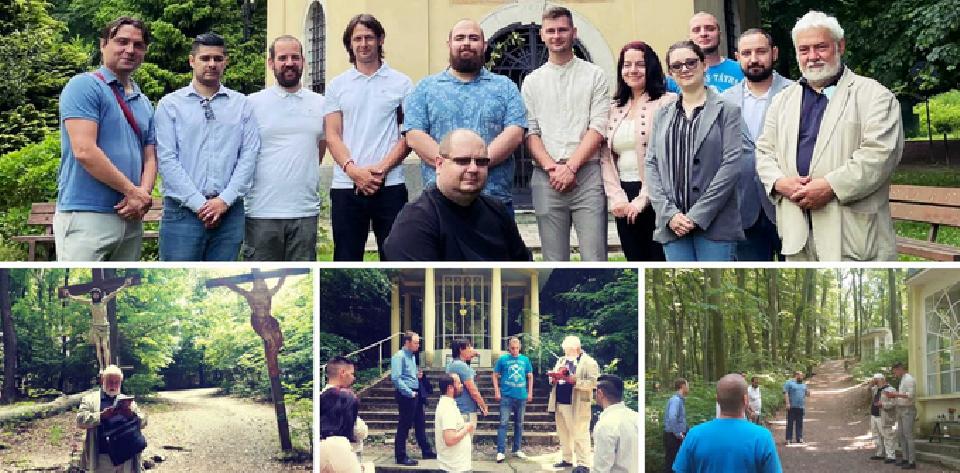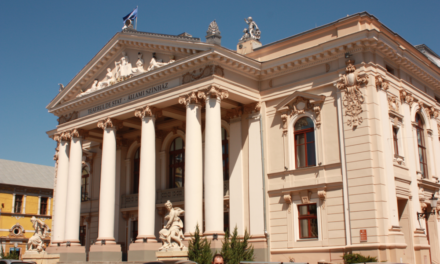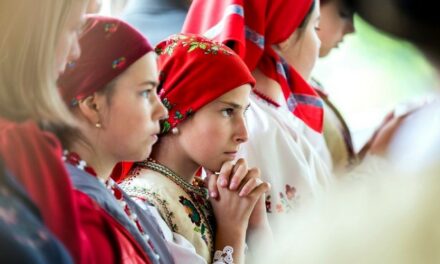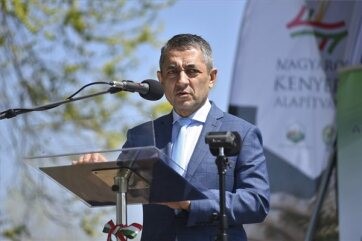During the time of the former Czechoslovak Republic, it became a tradition for Hungarians to take part in a two-day Trianon memorial pilgrimage to the Mária shrine in Máriavölgy, which was attended by nearly sixty thousand Hungarian believers on June 4, 1940.
Felvidék.hu reported in its articles published today that on Sunday, June 6, Hungarians commemorating Trianon once again made a pilgrimage to Máriavölgy. The students of the Esterházy Academy, its director and historian Imre Molnár took part in a holy mass at 11 a.m., held by Mgr. Timotej Górecki of Polish origin, who then welcomed the young people, many of whom had never been to Máriavölgy before.
After a brief presentation of the pilgrimage site, the interior of the Church of the Birth of the Virgin Mary was also viewed, and the cross with which János Esterházy is shown in one of the photographs from the period here, on the Máriavölgy pilgrimage, was also found.
János Esterházy thanked the sacrifices, devotion and silent protest of the faithful who made the thirty-kilometer journey, participated in the pilgrimage, and stuck to their religion, belief, and Hungarianness.
The police only allowed pilgrims from all walks of life in Bratislava, including religious groups, to return to the city, if the participants did not wear political badges and did not sing several named church songs, including, of course, the Hungarian national anthem...
The only option was to silently wave the Hungarian national flag while walking. The authorities, although they did not look kindly on it, did not dare to ban the event, since it would have been difficult to explain why the Slovak state power led by parish priest Tiso would ban a religious event.
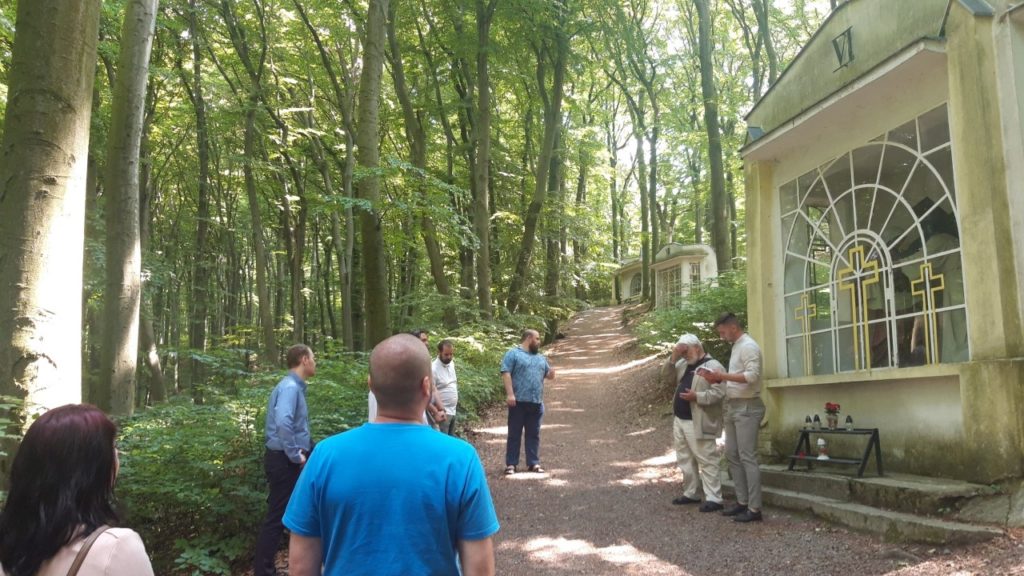
"We decided to visit the valley with the students of the Esterházy Academy every first Sunday of June, to train ourselves for the challenges facing us and our community with a spiritual exercise that brings clarity to the turmoil of everyday life," said László Gubík, director of the Esterházy Academy .
The idea of reviving the Trianon pilgrimage between the two world wars is commendable, and if it could even be resolved that the Holy Mass be celebrated in Hungarian and offered for national unity, it would have even more power. But the point is that László Gubík, Imre Molnár and the students of the Esterházy Academy took the first step. The rest will follow.
Further details can be found here.

